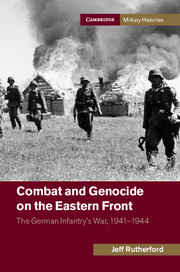Book contents
- Frontmatter
- Table of contents
- List of illustrations
- List of figures
- List of maps
- List of tables
- Acknowledgments
- Introduction
- 1 The Wehrmacht and German society
- 2 Preparations for war
- 3 “Attack with a ruthless offensive spirit and … a firestorm of destruction”
- 4 “Will the continuation of this attackbe worth it?”
- 5 “It is only a question of where, not if, civilians will starve”
- 6 The failure of Operation Barbarossa
- 7 The Soviet winter offensive, 1942
- 8 “The population … shouted out to the interpreter that one would rather be shot instead of being left to starve”
- 9 “From one mess to another”
- 10 “We need to fight to the end, so oder so”
- 11 A more rational occupation?
- 12 “As miserable representatives of themiserable twentieth century, we burnedall of the villages”
- Conclusion
- Bibliography
- Index
- References
Introduction
Published online by Cambridge University Press: 05 July 2014
- Frontmatter
- Table of contents
- List of illustrations
- List of figures
- List of maps
- List of tables
- Acknowledgments
- Introduction
- 1 The Wehrmacht and German society
- 2 Preparations for war
- 3 “Attack with a ruthless offensive spirit and … a firestorm of destruction”
- 4 “Will the continuation of this attackbe worth it?”
- 5 “It is only a question of where, not if, civilians will starve”
- 6 The failure of Operation Barbarossa
- 7 The Soviet winter offensive, 1942
- 8 “The population … shouted out to the interpreter that one would rather be shot instead of being left to starve”
- 9 “From one mess to another”
- 10 “We need to fight to the end, so oder so”
- 11 A more rational occupation?
- 12 “As miserable representatives of themiserable twentieth century, we burnedall of the villages”
- Conclusion
- Bibliography
- Index
- References
Summary
The infantry’s war
“This campaign is the infantryman’s war. He wins and holds territory. He combs through the forests, he secures the supply lines, he wins the war.” So wrote Lt. Schmidt, a member of the East Prussian 121st Infantry Division (ID) in early August 1941. His appraisal of Operation Barbarossa as an infantry campaign was certainly correct: while the overall success of the operation primarily hinged on the performance of the elite motorized and mechanized tip of the Wehrmacht, 107 of the 139 divisions that invaded the Soviet Union marched towards their objectives overwhelmingly dependent on horse-drawn transport for their supply needs. The declaration highlights the importance of the individual Landser to the German war effort: despite contemporaries’ fixation on the armored units that were racing across the steppes of the Soviet state – a fixation that has indeed persisted until the present day – it was the German infantryman who shouldered the bulk of the fighting, especially with the constant attrition suffered by armored divisions that left them severely weakened by the conclusion of the year. Lt. Schmidt did not, however, merely focus on the traditional military aims of destroying enemy forces and seizing territory. Due to the German High Command’s massive gamble that the Soviet state would crumble after only several weeks of fighting, he and other foot soldiers found themselves carrying out tasks normally set aside for rear-area formations: the securing of communication and supply lines between the front line and their logistical tails as well as apprehending thousands of scattered Red Army soldiers dislocated by the advancing German armor.
- Type
- Chapter
- Information
- Combat and Genocide on the Eastern FrontThe German Infantry's War, 1941–1944, pp. 1 - 33Publisher: Cambridge University PressPrint publication year: 2014



